
|
You entered: NASA
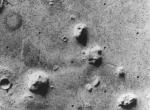 A Face On Mars
A Face On Mars
6.04.1998
This image, showing what looks to be a human face (above center) and other features of the Cydonia region on the Martian surface, was produced using data from NASA's Viking 1 orbiter in 1976.
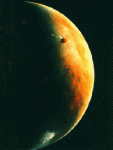 Barsoom
Barsoom
28.06.1997
"Yes, I have been to Barsoom again ..." begins John Carter in Edgar Rice Burroughs' 1913 science fiction classic "The Gods of Mars". In Burroughs' novels describing Carter's adventures on Mars, "Barsoom" is the local name for the red planet. Mars continues to inspire Earthdwellers' interests and imagination.
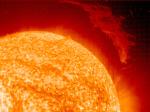 A Prominent Solar Prominence from SOHO
A Prominent Solar Prominence from SOHO
30.03.2004
One of the most spectacular solar sights is a prominence. A solar prominence is a cloud of solar gas held above the Sun's surface by the Sun's magnetic field. Last month, NASA's Sun-orbiting SOHO spacecraft imaged an impressively large prominence hovering over the surface, pictured above.
 The Gamma Ray Sky
The Gamma Ray Sky
12.01.2002
What if you could see gamma rays? If you could, the sky would seem to be filled with a shimmering high-energy glow from the most exotic and mysterious objects in the Universe.
 Henize 3 401: An Elongated Planetary Nebula
Henize 3 401: An Elongated Planetary Nebula
31.07.2002
How do dying stars eject their outer layers? Stars that create elegant planetary nebulas like Henize 3-401, pictured above, are not unusual, causing speculation that, one day, our own Sun may look like this.
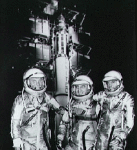 Mercury Astronauts and a Redstone
Mercury Astronauts and a Redstone
7.01.1996
Space suited project Mercury astronauts John H. Glenn, Virgil I. Grissom, and Alan B. Shepard Jr. (left to right) are pictured here posing in front of a Redstone rocket in this 1961 NASA publicity photo. Project Mercury was the first U.S. program designed to put humans in space.
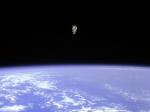 To Fly Free in Space
To Fly Free in Space
22.03.2005
At about 100 meters from the cargo bay of the space shuttle Challenger, Bruce McCandless II was further out than anyone had ever been before. Guided by a Manned Maneuvering Unit (MMU), astronaut McCandless, pictured above, was floating free in space.
 Cassini Approaches Saturn
Cassini Approaches Saturn
10.12.2003
Cassini, a robot spacecraft launched in 1997 by NASA, is close enough now to resolve many rings and moons of its destination planet: Saturn. The spacecraft has now closed to within a single Earth-Sun separation from the ringed giant. Early last month, Cassini snapped the contrast-enhanced color composite pictured above.
14.01.2004
If you could stand on Mars -- what would you see? Scrolling right will reveal a full color 360-degree panoramic view from NASA's Spirit Rover that landed on Mars just 10 days ago. The image is a digital mosaic from the panoramic camera that shows the view in every direction.
 Opportunity Rover Indicates Ancient Mars Was Wet
Opportunity Rover Indicates Ancient Mars Was Wet
3.03.2004
Was Mars ever wet enough to support life? To help answer this question, NASA launched two rover missions to the red planet and landed them in regions that satellite images indicated might have been covered with water.
|
January February March April May June July |
|||||||||||||||||||||||||||||||||||||||||||||||||